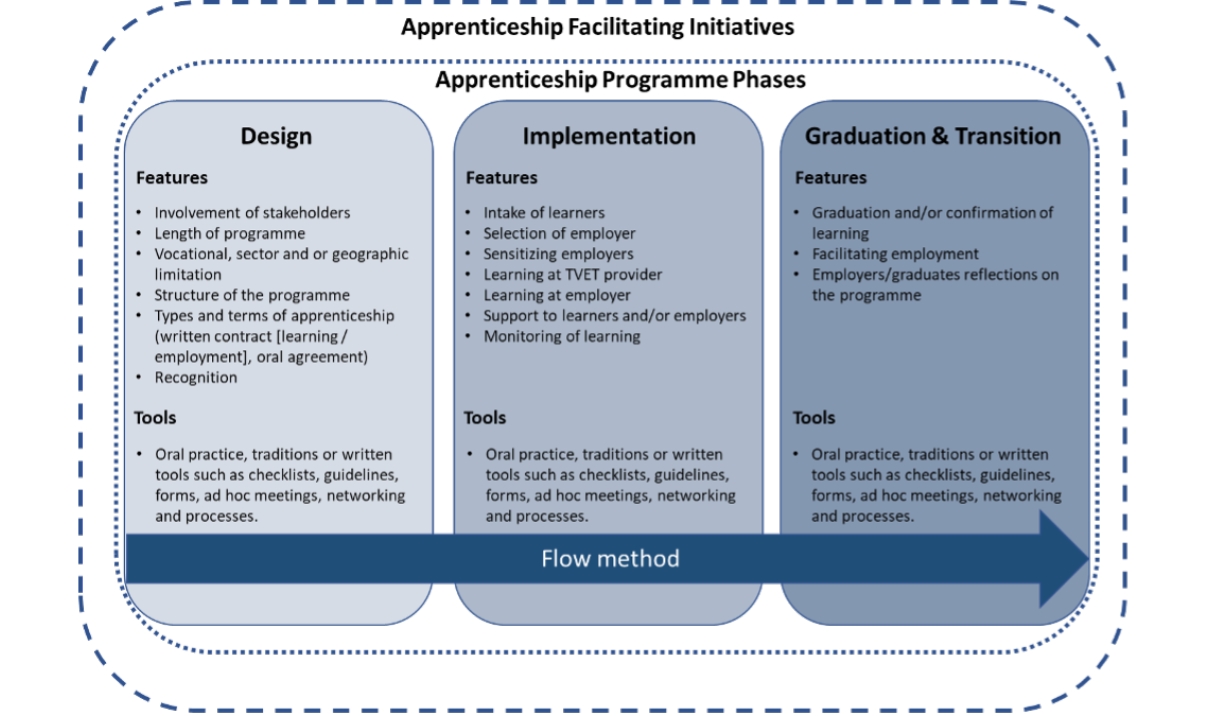Here you will find a series of practical African apprenticeship initiatives and tools used to facilitate the implementation of apprenticeships in Africa.
Apprenticeship is not a complicated or new concept for African countries. Informal apprenticeships have been practiced across African countries for decades. Successfully transferring these experiences to reflect the demands of ever-growing formal economies takes attention, consideration and planning.
We want to use practical examples of the application of apprenticeships across a range of African countries by TVET providers and employers, to inspire others when designing and delivering successful work-based learning programme.
The presented examples have been divided between apprenticeship initiatives and apprenticeship tools.

Apprenticeship initiatives are examples of practical initiatives that help frame or facilitate the implementation of apprenticeship training. This could be a legal framework or how a TVET levy can be used to engage employers in apprenticeship.

The second types of example are practical apprenticeship tools. These are tools used directly during the implementation of apprenticeship training. This could be apprentices’ logbooks, in-company instructors’ training programmes or the selection of local artisans to take on an apprentice.
Both types are practical examples of apprenticeship initiatives and tools used daily in different African apprenticeship programmes.
The apprenticeship initiatives and tools have been selected not because they necessarily are viewed to be the best examples but because they represent a wide range of the initiatives and tools used to promote and implement apprenticeships in Africa today.
Needless to say that the apprenticeship examples are therefore framed by the general situation, and the country’s formal and informal TVET system and tradition. Yet, they offer practical suggestions that can inspire others when building new apprenticeship programmes.



